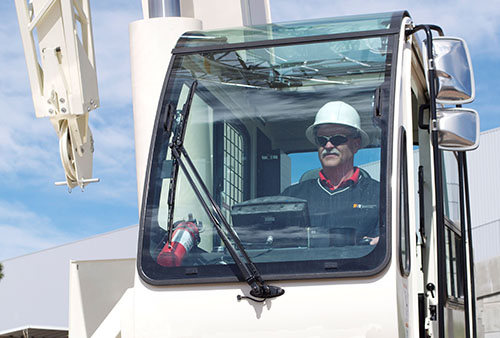December 2018—Eight years after the rule was originally published, and fully 15 years after the Cranes and Derricks Advisory Committee (C-DAC) finished its revision of the crane rule, OSHA’s requirement for construction crane operators to be certified has come into effect. We look at five key elements of the final rule:
1. Crane Operator Certification Is in Effect Now! The Final Rule published in August 2010, and that was last modified in November 2017 to extend the deadline by one year, states that the operator certification requirement takes effect on November 10, 2018. The effective date of this requirement is unchanged by the (second) Final Rule published last month. So, if you are not certified for the type of crane you are operating, your time is up: Get certified!
2. Certification Can Be by Type Alone. The Interim Compliance Guidance Guidance issued on November 5, 2018, provides for OSHA to accept certifications issued by type only, rather than by type and capacity as the (first) Final Rule states. This is incorporated permanently into the federal regulation by the (second) Final Rule that goes into effect on December 10, 2018.
3. Employers Must Evaluate Their Certified Operators. Effective February 7, 2019, employers must also evaluate their operators to ensure they have the skills and knowledge necessary to operate the crane(s) they are assigned (taking into account the cranes’ size and configuration), as well as the hoisting activities required. They must also demonstrate they have the ability to “recognize and avert” risk. If an employer has already evaluated operators employed prior to December 10, those evaluations will suffice.
4. The Evaluations Must Be Documented. The evaluation document, which must be made available at the worksite, must include the names both of the operator and the evaluator (who also has to sign it), the date the evaluation was conducted, and the make, model, and configuration of the crane.
5. Employers Are Still Responsible for Training. Operators who are not yet certified are classified as “operators-in-training.” Employers must provide them with sufficient formal and practical instruction to ensure they have the skills, knowledge, and ability to recognize and avert risk needed to operate their cranes safely. Operators-in-training are allowed to operate cranes without being certified (subject to certain restrictions), and they must be continuously monitored. The employer is also responsible for retraining as necessary.

It’s been a long and challenging journey, but OSHA has finally resolved the last remaining issues that had held up its requirement for crane operators to be certified.
Sorting It Out
The initial confusion surrounding the effective dates of OSHA’s crane operator certification requirements stemmed from the fact there are two Final Rules in play. The (first) Final Rule published in August 2010 provided for operator certification to go into effect four years later. That never happened because of industry concerns about having to certify by capacity, and whether an employer had additional duties to ensure operators were qualified beyond having them certified.
The certification deadline was extended twice, to November 10, 2018, and that date was not changed by the (second) Final Rule published last month. The fact that that the second rule had its own effective date of December 10 led some to think that operator certification deadline had been extended again; it had not.
Further resources are available at NCCCO’s OSHA Crane Rule Resource Center.